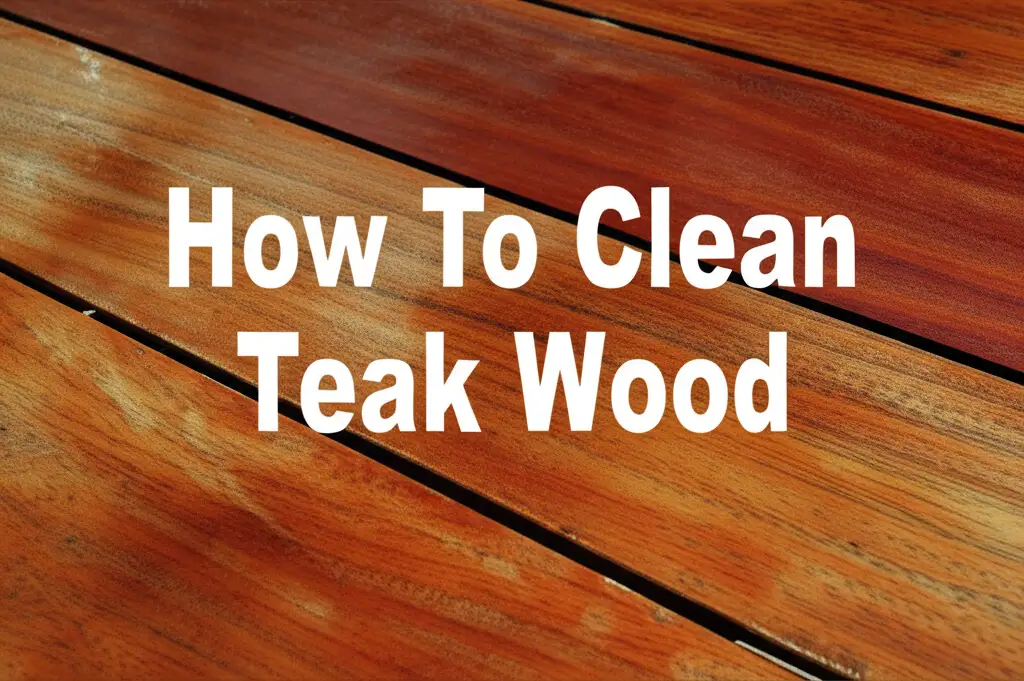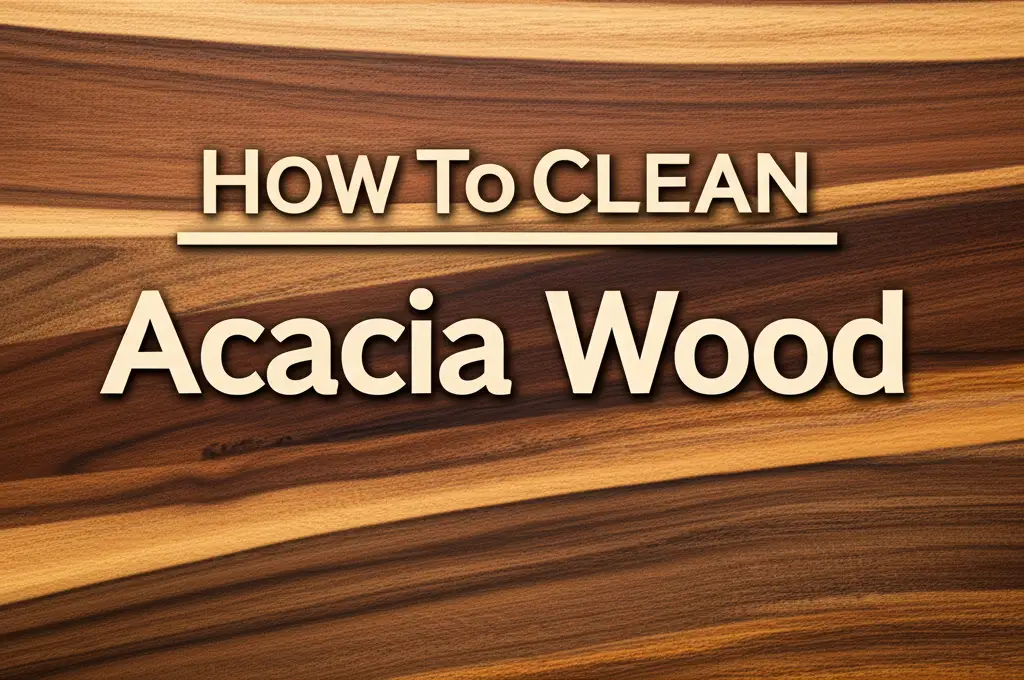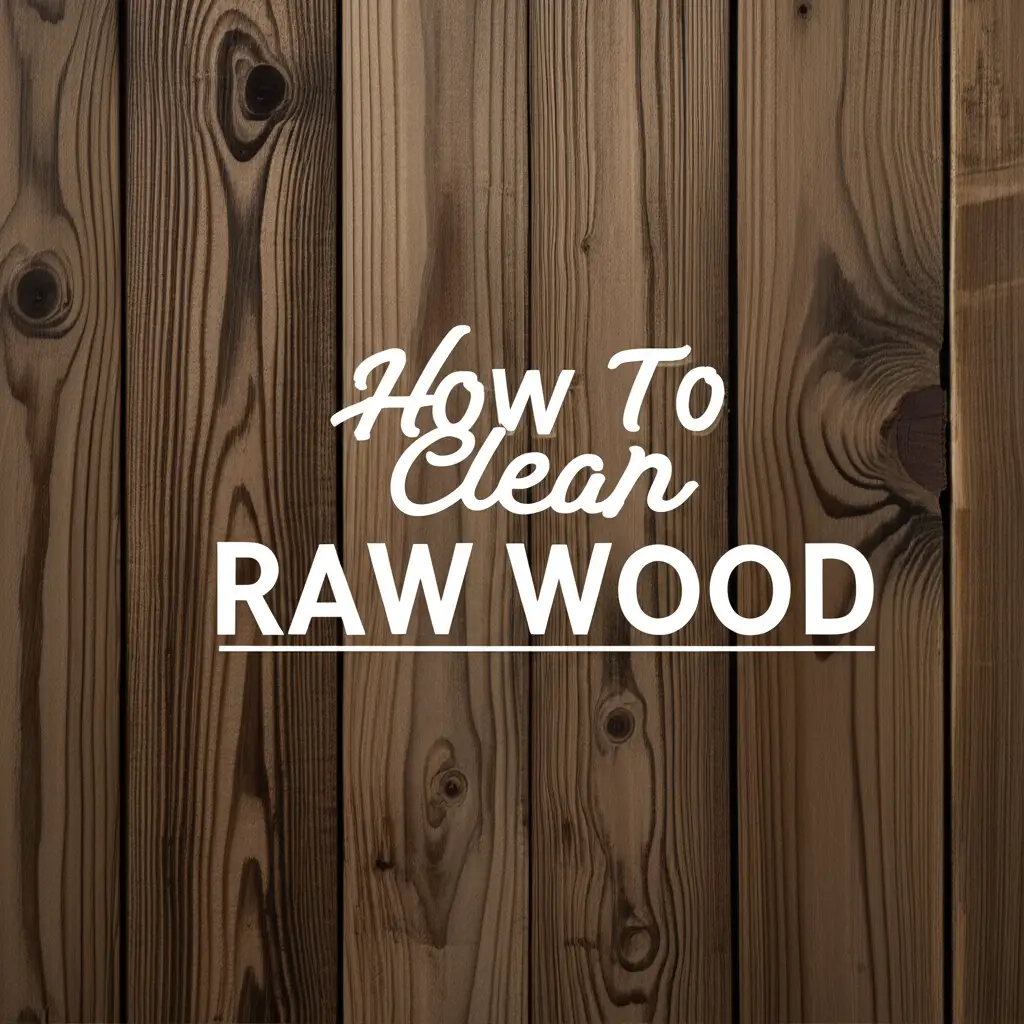· Wood Care · 17 min read
How To Clean Teak Wood

How to Clean Teak Wood Effectively
Teak wood brings timeless beauty to any space. It feels luxurious. Its durability and distinct grain patterns make it a favorite for outdoor furniture, boat decks, and elegant indoor pieces. Yet, even this robust wood needs proper care. Cleaning teak wood correctly keeps its golden-brown color and protects its natural oils. Without regular cleaning, teak can turn gray or even develop mildew. You want your teak to look its best, reflecting its natural beauty. This article will guide you through the process. We will cover gentle cleaning, deep restoration, stain removal, and important maintenance tips. By the end, you will know exactly how to keep your teak looking beautiful for many years.
Takeaway
Keeping your teak wood clean maintains its beauty and extends its life.
- Understand the type of teak and its specific needs.
- Gather the right tools for a safe and effective clean.
- Use gentle methods for light dirt and specialized cleaners for heavy grime.
- Address stains promptly with targeted solutions.
- Regularly maintain your teak to prevent future issues.
How to clean teak wood? Clean teak wood by first rinsing it with water to remove loose dirt. Then, apply a mild soap solution with a soft brush, scrubbing gently with the grain. Rinse thoroughly with clean water, ensuring no soap residue remains, and allow the wood to air dry completely.
Understanding Teak Wood and Its Unique Needs
Teak wood stands apart from other woods. It contains natural oils and rubber. These components make it exceptionally durable and resistant to water, pests, and decay. This is why teak is a top choice for outdoor settings and marine uses. Over time, outdoor teak changes. Its beautiful golden-brown color can fade. It turns a silvery-gray patina. This process is natural. It happens when sunlight and air react with the wood’s surface. Many people appreciate this gray look. However, if you prefer the original warm color, regular cleaning becomes necessary.
Indoor teak wood faces different challenges. It does not turn gray from sunlight exposure. Instead, indoor teak collects dust, dirt, and grime from daily use. It can also suffer from spills or scratches. Cleaning methods vary for indoor versus outdoor teak. Outdoor pieces need more robust cleaning to remove mildew, algae, or deep weathering. Indoor teak often requires a gentler approach to protect its polished finish. Knowing where your teak is located helps you choose the right cleaning method. You ensure your teak receives the care it needs to thrive. Proper cleaning removes dirt and helps preserve the wood’s integrity. It ensures your teak remains a valuable part of your home or outdoor space for decades.
Essential Tools and Supplies for Cleaning Teak Wood
Before you start cleaning, gather all your supplies. Having everything ready makes the process smooth and efficient. You do not need many items for basic cleaning. A soft-bristled brush is essential. It helps you scrub away dirt without damaging the wood fibers. Microfiber cloths are good for wiping and drying. Two buckets of water will be helpful. One holds your cleaning solution, the other holds rinse water.
For a gentle clean, a mild dish soap or a specialized teak soap works well. Avoid harsh detergents. They can strip the natural oils from the wood. For heavily soiled or grayed teak, you might need a dedicated teak cleaner. These often come in two parts: a cleaner and a brightener. Always wear rubber gloves to protect your hands, especially when using stronger products. Safety glasses are also wise. A garden hose with a spray nozzle will make rinsing easier. Remember, the right tools protect both you and your teak. Prepare these items to ensure a successful cleaning project.
- Soft-bristled brush: Choose one designed for wood or a soft scrub brush. Avoid stiff brushes, as they can scratch the teak’s surface.
- Microfiber cloths: Use for wiping, drying, and general cleaning.
- Two buckets: One for the cleaning solution, one for fresh rinse water.
- Mild soap: Options include dish soap, liquid laundry detergent, or specialized teak soap.
- Teak cleaner (optional): For heavily soiled or grayed teak. Follow product instructions carefully.
- Rubber gloves: Protect your hands from cleaners and prolonged water exposure.
- Safety glasses: Especially important when using strong chemical cleaners.
- Garden hose with spray nozzle: For effective rinsing of outdoor teak.
- Plastic sheeting (optional): To protect surrounding plants or surfaces if cleaning outdoors.
Gentle Cleaning for Lightly Soiled Teak Wood
Gentle cleaning is perfect for teak that just needs a refresh. This method works well for indoor teak furniture or outdoor pieces cleaned regularly. It removes surface dirt, dust, and light grime. You avoid harsh chemicals. This preserves the wood’s natural oils. The goal is to clean without stripping. This method helps maintain the teak’s warm, original color without causing damage. It is a simple process.
First, remove all loose debris from the teak surface. You can use a soft brush or a vacuum cleaner with a brush attachment. For outdoor items, a quick rinse with a garden hose can dislodge dirt. Next, prepare your cleaning solution. Mix a small amount of mild dish soap with warm water in a bucket. Dip your soft-bristled brush into the solution. Gently scrub the teak wood, always moving with the grain of the wood. Scrubbing against the grain can lift wood fibers. Work in small sections to keep the wood wet. After scrubbing a section, rinse it thoroughly with clean water. Make sure to remove all soap residue. Leftover soap can leave a dull film. Finally, let the teak air dry completely. For indoor teak, you can use a clean, dry microfiber cloth to absorb excess moisture. This gentle method keeps your teak looking good without much effort. For more specific guidance on caring for your indoor teak pieces, you can find detailed steps on how to clean indoor teak furniture. This simple approach extends the life and beauty of your teak.
Here are the steps for gentle teak cleaning:
- Clear the surface: Remove any cushions, decorations, or loose dirt from the teak.
- Rinse (for outdoor teak): Lightly spray outdoor teak with a garden hose to wet the surface and remove loose particles. Skip this step for indoor teak.
- Prepare solution: Mix about 1/4 cup of mild dish soap (or specialized teak soap) with one gallon of warm water in a bucket.
- Apply and scrub: Dip a soft-bristled brush into the soap solution. Gently scrub the teak surface, working with the wood grain. Avoid scrubbing too hard.
- Rinse thoroughly: Use a fresh bucket of clean water or a garden hose (for outdoor teak) to rinse off all soap residue. Ensure no suds remain.
- Dry: Allow the teak to air dry completely. For indoor teak, you can wipe away excess water with a clean, dry cloth.
Deep Cleaning Heavily Weathered or Stained Teak
Heavily weathered teak needs a more robust cleaning approach. This is often the case for outdoor teak furniture that has turned silvery-gray or shows signs of mildew. Natural aging is one thing, but dirt, grime, and mold can accumulate. These deeper issues require a stronger cleaner. Specialized two-part teak cleaners are very effective. They restore the wood’s original golden color. The first part cleans the wood, and the second part brightens it. Always read the product instructions carefully before you begin.
Start by wetting the teak surface with water. This helps the cleaner spread evenly and prevents it from drying too quickly. Apply the first part of the teak cleaner according to the manufacturer’s directions. This usually involves spraying or brushing the solution onto the wood. Let it sit for the recommended time. You might see the dirt and graying begin to lift. Then, use a medium-bristled brush to scrub the wood. Work with the grain. Apply steady pressure to remove stubborn grime and mildew. Pay attention to areas with heavy build-up. Rinse the teak thoroughly with plenty of clean water. Ensure all of the first solution is gone.
Next, apply the second part, the brightener. This step neutralizes the cleaner and helps bring back the wood’s warm tone. Again, follow the product’s instructions for application and dwell time. Rinse completely one more time. Allow the teak to air dry. The wood will look noticeably brighter and cleaner. Remember to wear protective gear like gloves and eye protection. These cleaners contain chemicals. Proper ventilation is also important. For specific issues like black mold on wood, you may want to consult more specialized guides on how to clean black mold off wood or how to clean mold off of wood furniture to ensure you are using the most effective and safe methods. This deep cleaning process revitalizes old, tired teak.
Steps for deep cleaning heavily soiled teak:
- Prepare the area: Move the teak to a well-ventilated area. Protect surrounding plants or surfaces with plastic sheeting. Wear gloves and eye protection.
- Wet the teak: Use a garden hose to thoroughly wet the entire teak surface.
- Apply Part 1 (Cleaner): Follow the product instructions. Apply the cleaning solution evenly to the wet teak. Often, you spray or brush it on.
- Allow dwell time: Let the cleaner sit for the time recommended by the manufacturer (usually 5-10 minutes). Do not let it dry on the wood.
- Scrub: Use a medium-bristled brush to scrub the teak, always moving with the grain. Apply firm pressure to loosen dirt and graying.
- Rinse thoroughly: Use a strong stream of water from your garden hose to completely rinse off the first solution. Ensure no suds or residue remain.
- Apply Part 2 (Brightener): Apply the brightener solution as directed by the product. This step neutralizes the cleaner and restores the wood’s color.
- Allow dwell time and rinse again: Let it sit, then rinse thoroughly with plenty of clean water until the water runs clear.
- Air dry: Allow the teak to air dry completely. The wood will lighten in color as it dries.
Tackling Common Teak Stains: A Spot Treatment Guide
Teak, while durable, can still fall victim to various stains. Spills and outdoor elements often leave marks. Addressing stains quickly prevents them from setting deep into the wood. Different types of stains require specific treatment methods. Understanding the stain helps you choose the right approach. You can usually remove most common stains with simple household items or targeted cleaners.
Oil and Grease Stains: These are common, especially on outdoor teak or in dining areas. Act fast. Blot up as much oil as possible with a clean cloth. Do not rub. Rubbing spreads the stain. Then, sprinkle an absorbent material like cornstarch or talcum powder over the stain. Let it sit for several hours or overnight. This powder absorbs the oil. Brush off the powder. If a mark remains, gently clean the area with a mild degreasing soap solution and a soft brush. Rinse well.
Food and Drink Stains: Coffee, wine, and food spills can leave dark spots. For fresh spills, wipe them immediately with a damp cloth. For dried stains, make a paste of mild dish soap and water. Apply the paste to the stain. Let it sit for a few minutes. Gently scrub with a soft brush or sponge. Rinse thoroughly with clean water. For stubborn stains on wood, remember to check out broader advice on how to clean stains on wood.
Water Spots and Rings: These occur when water sits on the surface and dries, often leaving a lighter mark. For fresh water marks, sometimes simply letting the wood dry completely will fix it. For older or more stubborn water rings, a very light sanding might be needed. Use fine-grit sandpaper (220-grit or higher). Sand gently with the grain, just enough to remove the mark. Follow with a general cleaning of the area.
Mildew and Mold: These appear as black or green spots, especially in humid environments. A solution of distilled white vinegar and water can be effective. Mix equal parts vinegar and water. Apply the solution to the affected area with a cloth or soft brush. Gently scrub the mildew away. Rinse with clean water. For stubborn mildew, or if you prefer to use vinegar for general wood cleaning, detailed instructions are available on how to clean wood furniture with vinegar. Always test any solution in an inconspicuous area first. This prevents potential damage to your teak’s finish.
Restoring Teak’s Natural Luster After Cleaning
After cleaning, your teak wood looks refreshed. Now, you can choose to restore its natural luster and protect it. Teak naturally contains oils. These oils give it its beautiful color and resistance. Over time, especially outdoors, these oils can diminish. You have two main options for restoration and protection: teak oil or teak sealer. Each product offers different benefits and appearances.
Teak Oil: Applying teak oil enhances the wood’s natural golden-brown color. It replenishes the oils lost during weathering or cleaning. Teak oil penetrates the wood fibers. It gives the teak a rich, warm glow. This option is popular for those who prefer the vibrant, new look of teak. It needs reapplication more frequently, typically every few months, depending on exposure. Application involves wiping the oil onto the clean, dry wood with a cloth. Then, you wipe off any excess. Teak oil does not prevent the wood from eventually turning gray again. It simply helps maintain the rich color.
Teak Sealer: A teak sealer creates a barrier on the wood’s surface. It protects the wood from UV rays, moisture, and dirt. Sealers prevent the graying process. They help the teak retain its original color for a longer time. Sealers are more durable than teak oil. They often last for a year or more before reapplication is needed. Applying a sealer is similar to applying oil. You ensure the wood is clean and dry. Then, you apply the sealer evenly. Wipe off any excess. Some sealers can change the feel of the wood slightly. They might make it less “natural” to the touch.
Your choice depends on your preference. If you love the rich, golden hue and are willing to reapply often, choose teak oil. If you want maximum protection and wish to prevent graying for a longer period, a teak sealer is the better choice. Always ensure the teak is completely dry after cleaning before applying any oil or sealer. This allows the product to penetrate or adhere properly. Proper restoration keeps your teak looking its best.
Preventative Measures and Regular Teak Maintenance
Maintaining teak wood goes beyond occasional deep cleaning. Regular preventative measures can significantly reduce the need for intensive cleaning. They help keep your teak looking good for longer. Consistency is key. A little effort often prevents big problems later. These practices save you time and money.
Regular Dusting and Wiping: For indoor teak, simple dusting with a soft cloth prevents dust buildup. For outdoor teak, a quick wipe-down with a damp cloth can remove surface dirt. Do this weekly or bi-weekly. This prevents grime from bonding to the wood.
Immediate Spill Cleanup: Accidents happen. If you spill anything on your teak, clean it immediately. Use a clean cloth to blot up the spill. Do not rub. Rubbing can spread the stain or push it deeper into the wood. For sticky or oily spills, a mild soap and water solution can help. Rinse the area thoroughly afterwards.
Use Coasters and Placemats: For teak tables, especially indoors, coasters and placemats are invaluable. They protect the surface from hot items, condensation rings, and food spills. This simple habit prevents many common stains and water marks.
Positioning Outdoor Teak: Consider where you place outdoor teak furniture. If possible, avoid areas with constant shade and dampness. These conditions promote mildew and algae growth. Moving furniture occasionally can also help ensure even weathering. For advice specifically on cleaning outdoor teak, you can find more information on how to clean outdoor teak furniture.
Protective Covers: During extended periods of non-use, especially in harsh weather, consider covering your outdoor teak furniture. Breathable covers protect the wood from extreme sun, rain, and snow. Ensure the cover allows for air circulation to prevent moisture buildup and mildew.
Seasonal Checks: Inspect your teak furniture seasonally. Look for any signs of mildew, excessive dirt, or damage. Address small issues before they become major problems. A light cleaning at the start of each season can maintain its appearance. These maintenance steps are simple. They ensure your teak remains a beautiful and enduring part of your home for many years.
FAQ Section
Q1: Can I power wash teak wood? A1: Using a power washer on teak wood is generally not recommended. High-pressure water can damage the soft wood fibers and lift the grain. This makes the surface rough and can cause splintering. If you must use a power washer, use it on the lowest setting. Keep the nozzle far from the wood surface. A garden hose with a spray nozzle provides enough pressure for most cleaning needs without risk of damage.
Q2: How often should I clean my teak wood? A2: The cleaning frequency depends on the teak’s location and use. Outdoor teak exposed to elements may need cleaning every 6-12 months to remove grime or prevent severe graying. Indoor teak usually needs a light cleaning every few months, or as dust and dirt accumulate. Spot clean spills immediately. Regular light cleaning reduces the need for deep cleaning.
Q3: What is the difference between teak oil and teak sealer? A3: Teak oil soaks into the wood, replenishing natural oils. It enhances the golden color and provides some water repellency. Teak oil needs frequent reapplication. A teak sealer forms a protective layer on the surface. It prevents graying and offers stronger protection against UV rays and moisture. Sealers last longer than oils. Your choice depends on desired look and maintenance effort.
Q4: Does cleaning teak remove the gray patina? A4: Yes, a proper deep cleaning will remove the gray patina from teak wood. The gray is a surface oxidation layer. Cleaning products, especially two-part teak cleaners, are designed to strip this layer away. This reveals the fresh, golden-brown wood underneath. If you prefer the gray look, you can skip these deeper cleaning steps.
Q5: Can I use bleach on teak wood? A5: You should not use bleach on teak wood. Bleach can dry out the natural oils in the wood. It can also cause discoloration or weaken the wood fibers over time. For mildew or stubborn stains, a specialized teak cleaner or a diluted vinegar solution is a safer and more effective alternative. These products clean without harming the wood’s integrity.
Q6: How do I clean teak shower benches? A6: Cleaning a teak shower bench requires specific attention due to constant moisture exposure. Use a mild soap and warm water solution. Scrub gently with a soft brush, focusing on areas with soap scum or mildew. Rinse thoroughly with clean water. Allow the bench to air dry completely. For more detailed instructions specific to this common item, refer to guides on how to clean teak shower bench. Regular cleaning helps prevent mold and keeps the bench hygienic.
Conclusion
Cleaning teak wood correctly is simple. It makes a big difference in how your pieces look and last. We have explored the unique needs of teak. We covered gentle cleaning for light dirt and deep methods for tough grime. You now know how to tackle common stains effectively. We also looked at restoring teak’s color and protecting it with oils or sealers. Finally, we discussed preventative measures and regular maintenance. These steps are not hard. They keep your teak beautiful.
Remember, the key is understanding your teak. Know its environment. Choose the right cleaning method. Whether you prefer the silvery patina or the warm golden glow, proper care makes it possible. By following these guidelines, you extend the life of your teak furniture. You protect your investment. Your teak will continue to bring elegance to your home for many years. Take action today. Give your teak the care it deserves. Enjoy its lasting beauty.
- teak care
- wood cleaning
- furniture maintenance
- outdoor furniture
- indoor teak




